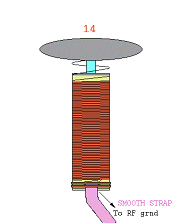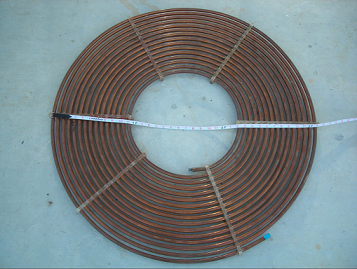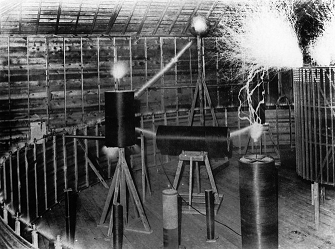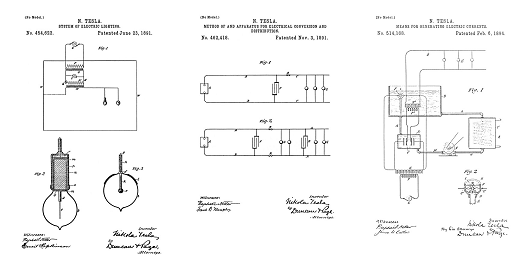Tesla Coil Air-Blast Spark Gap

AIR BLAST SPARK GAP
Mirror of: https://www.nic.funet.fi/pub/sci/electrical/tesla/misc/sparkgap.zip
This gap offers several advantages over many of the gaps I have studied. It frees the coil up from any electrical utility required when fans or blowers are used on a static gap. This is also true when a rotary gap system has been used with a neon transformer power supply, as this gap can replace a rotary in this application and give better performance. This gap has very high Q and gives extremely low quench times. The performance of this gap on coils powered by neon sign transformers is second to none. If you run neons, and you want the longest spark at any cost, then this is the gap for you.
The system consists of two electrodes cut from 1 inch brass bar stock. The electrodes are 1-1/2 inches long by 1 inch diameter. The back side is machined one inch deep to accept a 3/8 inch threaded brass dowel. The face of the electrodes are flat and polished. The electrodes weigh 4 & 3/4 ounces each and sink a lot of heat without requiring cooling fins. Beneath the gap, I mounted a 1/2" ID pipe fitted with a standard male air coupling at one end. I hook the air feed pipe to a two-stage piston air compressor, and using a regulator, blow 20 psi (minimum) of air through the gap electrodes from the bottom up. It quenches extremely well.
With the arc shielded during operation, the compressed air blows a clearly visible jet of hot ions upwards from between the gap. The flame extends one to two inches high. Even after 15 minutes of operation at 2 kw, the electrodes are barely warm to the touch.
This configuration offers several advantages:
(1) Gap distance can be adjusted precisely and quickly by rotating the electrodes on the threaded rod, as opposed to most multiple and quench gaps. (2) Higher power can be accommodated simply by increasing the air feed pressure (or CFM). (3) A single pair of strong magnets can be mounted on either side of the brass gap to assist quenching at even higher powers by dispersing ions away from the arc and into the high speed airstream. (4) The electrodes can be quickly removed for examination and/or cleaning without disassembly of the gap. My electrodes require a light burnishing with #1200 sandpaper after every hour of operation. The procedure takes less than 5 minutes.
Using a diaphragm compressor, it is not necessary to regulate the output. Just hook up and run the compressor flat out. The lower output (CFM) of the diaphragm compressor reduces quenching, but can be overcome by using an old portable propane tank in series as a holding tank. A full tank of air will supply air flow for quenching at higher power.
This gap hisses like a large snake when the air feed is turned on. When you hit your power switch and feed juice to the coil this gap will take off. The noise is similar to a chain saw run full throttle without a muffler. Indoors, hearing protection is a must. Outdoors, your neighbors are sure to complain!
Tesla disclosed magnetically quenched spark gaps in Fig 133 of the following lecture:
EXPERIMENTS WITH ALTERNATE CURRENTS OF HIGH POTENTIAL AND HIGH FREQUENCY

Lecture by Nikola Tesla Presented to the Institution of Electrical Engineers, London, February 1892

High Performance Tesla Resonator Design



Tesla's Electric Circuit Controllers

Precision Switching Technology
Tesla's Electrical Isochronous Oscillators

Capacitive Discharge Power Processing
To the Archive Page Discussion on Tesla's Technology

